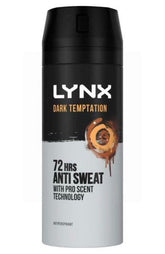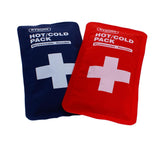DIY Pet Accessories: Fun and Affordable Ways to Spoil Your Pet
Why DIY Pet Accessories Are Worth It
If you’re a pet parent, you know that treating your furry friend doesn’t always have to mean spending a fortune at the pet store. From stylish collars to cozy beds and interactive toys, the options are endless—but so are the prices. That’s where DIY pet accessories come in.
Creating your own pet accessories isn’t just about saving money; it’s about adding a personal touch that reflects your pet’s personality. Whether you’re a seasoned crafter or just getting started, there are plenty of simple, fun, and affordable projects that can make your pet’s life more comfortable and exciting.
In this guide, we’ll walk through creative ideas, step-by-step examples, and practical tips to help you make unique accessories for your pet—all without breaking the bank.
1. DIY Pet Collars: Stylish, Safe, and Customised
A collar is more than just an accessory—it’s part of your pet’s identity. Instead of buying one off the shelf, try making your own.
What you’ll need:
-
Cotton or nylon webbing
-
A sturdy buckle
-
D-ring for tags
-
Needle and thread or a sewing machine
Start by measuring your pet’s neck, leaving room for two fingers’ width so it’s snug but not tight. Cut the webbing to length, add your hardware, and stitch securely. You can even decorate the collar with fabric paint, patches, or embroidered initials.
For example, one dog owner I know used a bright, patterned ribbon that matched her dog’s personality—playful and bold. It cost less than £5 and lasted longer than the store-bought version.
Tip: If your pet swims or gets messy often, use quick-drying nylon and a plastic buckle instead of metal to prevent rusting.
2. Homemade Pet Beds: Comfort Meets Creativity
A good bed helps your pet feel secure and supported. But pet beds from major brands can cost a small fortune. Making your own lets you choose the materials and size to fit your space perfectly.
Simple DIY idea:
Repurpose an old jumper, pillow, or fleece blanket. Fill it with shredded foam, old clothes, or polyester stuffing, and sew up the ends.
For a more structured bed, use a wooden crate or an old suitcase. Line it with a soft cushion, and you’ve got a vintage-style pet bed that looks charming and costs next to nothing.
Real-life tip: Cats especially love enclosed spaces. Turning a cardboard box into a “cat cave” by cutting out an entrance and adding a blanket can instantly become their favourite nap spot.
Making your own pet bed gives you control over comfort and style, and it’s surprisingly satisfying to see your pet curl up in something you made with care.
3. DIY Toys to Keep Your Pet Entertained
Pets need mental and physical stimulation, and toys are a great way to provide both. You don’t need fancy gadgets—some of the best pet toys are the simplest ones.
For dogs:
-
T-shirt rope toy: Braid strips of old T-shirts and tie knots at both ends. It’s soft on teeth and perfect for tug-of-war.
-
Tennis ball treat puzzle: Cut a small slit in a tennis ball and fill it with dry treats. It keeps your dog busy trying to get them out.
For cats:
-
Feather teaser: Attach feathers to a string and tie it to a stick. It triggers their hunting instincts.
-
Toilet roll puzzle: Fill a toilet paper roll with kibble, fold both ends, and poke small holes for treats to fall out when batted around.
The beauty of homemade toys is that you can tailor them to your pet’s size and play style. Just make sure to supervise your pet during playtime to avoid accidental ingestion of loose parts.
4. DIY Feeding Stations: Functional and Aesthetic
Feeding time can get messy, especially with enthusiastic eaters. A DIY feeding station helps keep things tidy and looks good in your home.
Basic setup:
Use an old wooden crate or pallet board as a base. Cut out holes for food and water bowls so they sit securely. Sand and paint the wood with pet-safe paint, and you’ll have a feeding area that looks neat and organised.
For small pets, elevate the bowls slightly to improve digestion and posture. If your cat tends to knock over water bowls, attach non-slip pads underneath.
Adding a personal touch—like your pet’s name stencilled on the side—turns a simple utility item into something special.
Pro tip: Keep a washable mat beneath the station to make cleaning up spills much easier.
5. Homemade Leashes and Harnesses
Just like collars, leashes, and harnesses can be made at home with a bit of creativity. They’re perfect for small dogs or cats that need a light, secure way to explore outdoors.
Materials:
-
Strong rope or climbing cord
-
Metal clips or hooks
-
Heat-shrink tubing or tape for grip
To make a leash, tie knots at intervals for handholds, attach the clip at one end, and finish with decorative tape. It’s strong, customisable, and costs a fraction of what pet shops charge.
Harnesses can be a bit more complex, but simple fabric versions can be sewn using online patterns. Always test fit and comfort before taking your pet outside.
Example: A friend once made a matching set of leashes for her two spaniels using paracord in their signature colours. Not only did they look great, but the leashes were durable and easy to wash.
6. Upcycled Accessories: Eco-Friendly and Budget-Smart
DIY projects are also a great way to reuse materials you already have. Old jeans, sweaters, or even furniture can be repurposed into something useful for your pet.
Ideas to try:
-
Denim chew toys: Cut old jeans into strips and braid them. They’re surprisingly tough and safe for chewing.
-
Sweater beds: Use the body of an old jumper, stuff it, and sew it shut. It keeps the scent of home, which comforts your pet.
-
Furniture hacks: Turn an old nightstand into a cosy nook for your cat by removing drawers and adding a cushion.
Not only do these projects reduce waste, but they also give your pet something infused with familiar smells and textures.
This sustainable approach to pet accessories is practical and rewarding—you’re helping your pet and the planet at the same time.
7. Safety and Comfort: What to Keep in Mind
When making DIY pet accessories, safety should always come first. A cute collar or toy won’t be worth it if it puts your pet at risk.
Here are a few golden rules:
-
Avoid small parts or embellishments that could be swallowed.
-
Use non-toxic materials, especially for items your pet might chew.
-
Double-check seams and stitching for strength.
-
Test comfort—make sure nothing is too tight, rough, or irritating.
If you’re unsure about a design, try it for short periods and observe your pet’s reaction. Adjust or replace materials if needed.
The best DIY accessories are the ones that balance creativity with comfort and safety.
Conclusion: The Joy of Crafting for Your Pet
DIY pet accessories are more than just crafty projects—they’re an expression of love. Making something for your pet, whether it’s a soft bed, a fun toy, or a unique collar, strengthens your bond and gives you a sense of pride.
You don’t need fancy tools or professional skills—just a few materials, a bit of time, and some creativity. Start small, experiment, and have fun with it. Your pet won’t care if the stitching isn’t perfect; they’ll just love the attention and comfort that comes with it.
So next weekend, grab those old T-shirts, scraps of fabric, or that empty crate sitting in the garage. Turn them into something special. Affordable, personal, and full of heart—that’s the real beauty of DIY pet accessories.





